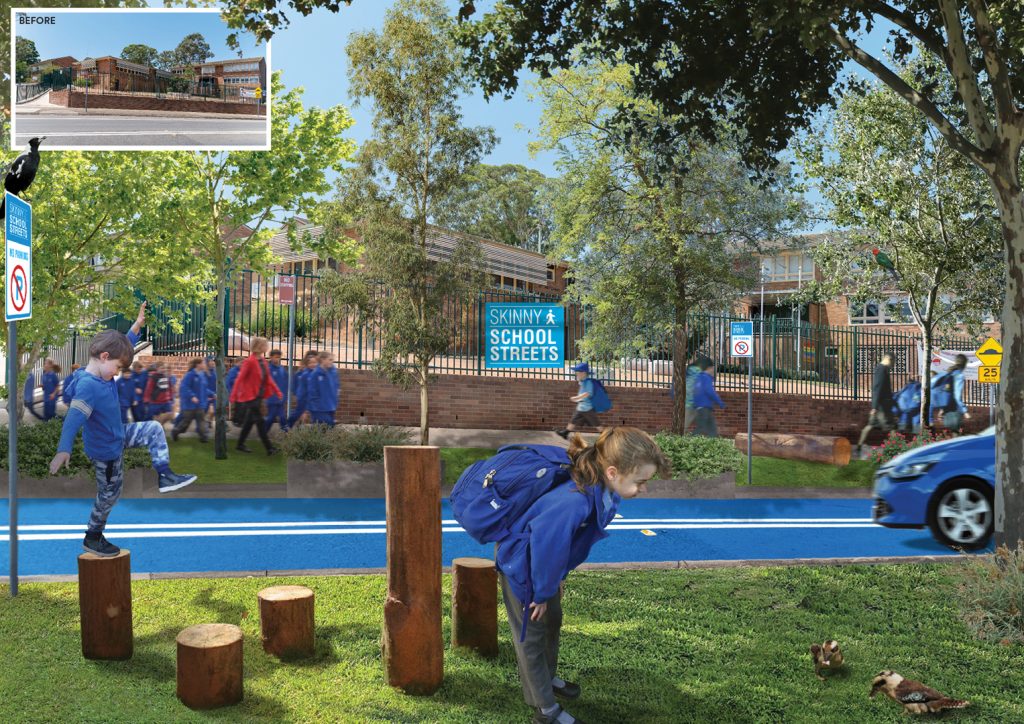SKINNY SCHOOL STREETS
Eve Bartolo
Eliminating parking within a 650m radius around schools to enforce a 10minute walk to school.
In 2018, a survey from Heart Foundation’s Live Lighter suggests more than two in three Australian children and teenagers are being driven to school. NSW had the highest proportion of parents who said there was too much traffic on the roads for their children to walk to school (69 per cent). Other research is now suggesting where you live affects your health and how our neighbourhoods can encourage environmental-induced inactivity.
Safer, wider, shaded, and playful pedestrian areas around all schools can be created by eliminating parking (bus and disability parking exempted) within a 650m radius around the school to enforce a 10minute walk from the car to school. These new skinny streets are created by converting parking lanes into new pedestrian areas with tall shade trees, wider footpaths and playful tactical features to encourage a daily journey of nature discovery.
The school then becomes a green centre of the neighbourhood. These skinny streets can extend as green corridors that could connect schools to shops, preschools as well as public transport and other services. These green hubs could have 40% more tree canopy cover, and this, in turn, would benefit the entire community.
In this modern world reducing convenience through forced behavioural change is an unconventional approach, however, the skinny school streets will have a strong and positive impact on all aspects of children’s health and well-being. At the same time improving each of the neighbourhoods involved.
